Bridge Health Monitoring is a process of executing a damage detection and various engineering characteristics by monitoring various technical parameters.
This takes place in the form of installing sensors that notify the required person of a change. It includes observing the system over time, using the data from an array of sensors to determine damage-sensitive features, and analysing them to calculate the current health of the structure and if it needs any change/construction. This is done pre-post-construction, and even to ancient structures, ensuring that every structure is as solid as it can be.
This process involves the installation of sensors that alert designated personnel about any changes to the selected parameters. It encompasses monitoring the system over time, utilizing data from a network of sensors to identify features sensitive to damage, and analysing this information to assess the current condition of the bridge and determine if any corrective or preventive action is necessary.
This approach is applied both before and after construction, ensuring that every structure maintains optimal stability.
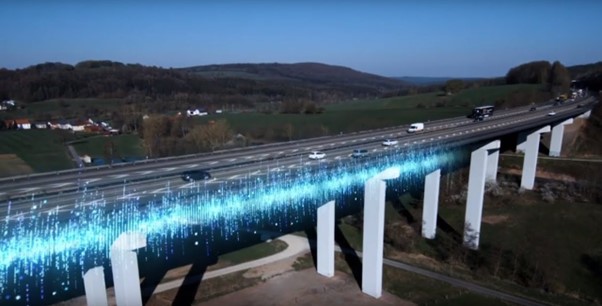
The CorroWatch Multisensor is integrated into the concrete cover of newly constructed concrete structures. This device is designed to measure various critical parameters to evaluate the corrosion status. It features four measuring electrodes made of black steel (anodes) positioned at different locations, maintaining a known distance from the reinforcement, along with a measuring electrode made of noble metal (cathode).
The height of the anodes is adjustable to accommodate the thickness of the concrete cover. To forecast the onset of corrosion in the reinforcement, the current flowing between the individual anodes and the cathode is monitored using either a specially designed handheld zero-ohm ammeter or a custom-built data logger. A notable increase in current indicates the initiation of corrosion.
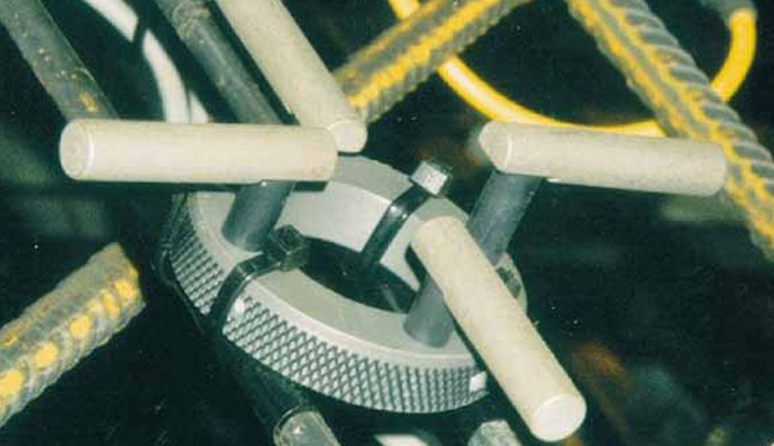
The CorroRisk probe has been designed specifically for existing concrete structures, utilizing the same measurement principles as the CorroWatch probe, which is intended for new constructions. This probe allows for the early prediction of reinforcement corrosion, well in advance of its onset.
The CorroRisk probe is typically positioned within the concrete cover, situated between the surface and the outermost layer of reinforcement. The measuring electrodes, or anodes, are specifically engineered to be installed at various predetermined depths within the cover layer. Measurements can be conducted using a specially developed ohm-ampere meter or through a uniquely designed data logger.
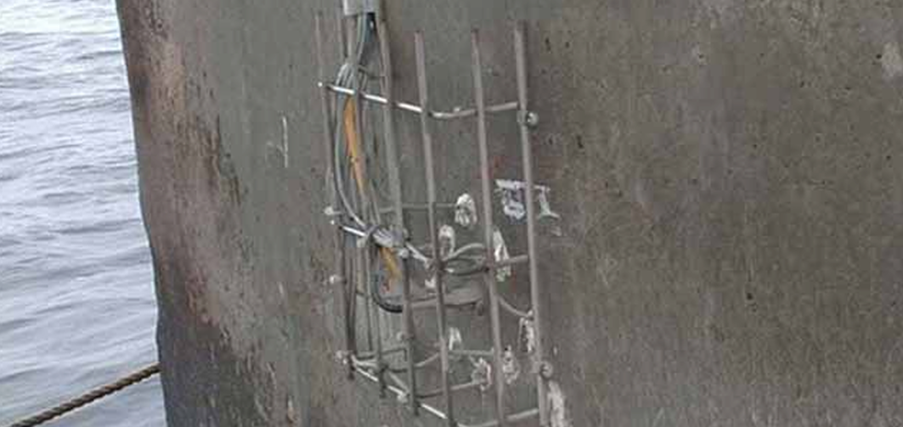
The Standard Deformation Sensor is for surface mounting or embedding in concrete and mortars. This is Ideal for long-term structural deformation monitoring which has 20-year track record in the field applications.
SOFO deformation sensors function as transducers that convert variations in distance into changes in the path imbalance between two optical fibres, which can be accurately measured using a SOFO VII Reading Unit.
The sensor is composed of two main parts: active and passive. The active part contains the reference and the measurement fibres and measures the deformations between its two ends. The passive part is insensitive to deformations and is used to connect the sensor to the Reading Unit. The output is terminated with an E-2000 connector with a built-in protective cover. The sensors can be quickly and easily surface mounted or directly embedded in concrete and mortars.
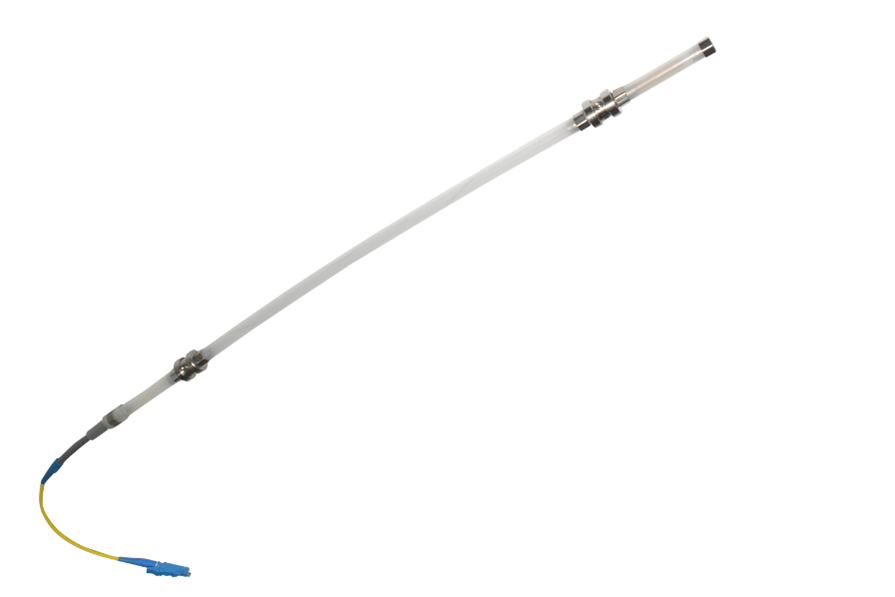
| TECHNICAL SPECIFICATIONS | |
|---|---|
| Length of active zone (LA, measurement basis) | 25 cm to 10 m, standard lengths 10 m to 20 m, customized lengths upon request |
| Length of passive zone (connecting cable) | 1 m to 100 m Customized lengths up to 2000 m upon request |
| Measurement range | 0.5% of LA in shortening, 1% of LA in elongation |
| Measurement precision | 0.2% of the measured deformation or better |
| Measurement resolution | 2 μm RMS |
| Connecting cable protection options (see specific datasheet for details) | Standard (recommended for embedding or surface mounting in normal conditions) Stainless steel protecting tube (recommended in harsh conditions) Simple cable without protecting tube (recommended for laboratory conditions) |
| Operating temperature | Standard active zone: -50 °C to +110 °C Special active zone (upon request): -50 °C to +170 °C Passive zone: -40 °C to +80 °C |
| Waterproof | 5 bars (15 bars with extra protection on anchoring points) |
| Calibration | Not required |
The MuST FBG deformation sensors function as transducers, converting variations in static or dynamic distances into alterations in the reflected wavelength of a pre-stressed Fiber Bragg Grating, which can be accurately measured using smart reading units.
The sensor consists of two components: an active part and a passive part. The active component houses the measurement fibre, which detects deformations between its endpoints and converts these changes into a wavelength shift of the Fiber Bragg Grating. Conversely, the passive component is unaffected by deformations and serves to link the sensor to the Reading Unit. Additionally, a loose Fiber Bragg Grating can be integrated into the passive section for temperature measurement and compensation purposes.
The sensors are available in single-ended, double-ended, or chained arrangements. With our Readout Units, it is feasible to connect as many as 7 full-range temperature-compensated sensors on a single channel, or alternatively, 4 temperature-compensated sensors alongside 4 non-compensated ones. The sensors are equipped with E2000-APC connectors or can be customized according to user specifications.
The installation of the sensors is straightforward and efficient, ensuring that the construction timeline remains unaffected. They can be seamlessly integrated into concrete and mortars or mounted on the surface.
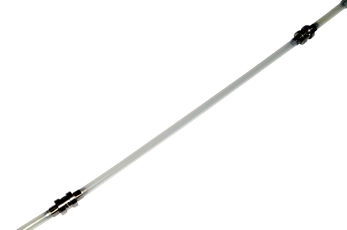
| TECHNICAL SPECIFICATIONS | |
|---|---|
| Length of active zone (LA, measurement basis) | 20 cm to 2m |
| Length of passive zone (connecting cable) | 1 to 200 m (longer distances available on request) |
| Pre-tensioning of the measurement fibre | 0.5% of the length of active zone (others on special request) |
| Measurement range | Strain: 0.5 % in shortening, 0.75 % in elongation Temperature: -40 °C to +80 °C |
| Measurement resolution/ Accuracy | 0,2 µε / 2 µε (using SMARTEC Reading Units) |
| Connecting cable protection options (see specific datasheet for details) | Standard cable: Gray (for embedding or surface mounting in normal conditions); Stainless steel reinforced cable: Black (recommended in harsh conditions); Simple unprotected cable: Yellow (only for laboratory conditions) |
| Optical connectors | E-2000 AC (8°) |
| Operating temperature | Passive zone: -40 °C to +80 °C; Standard active zone: -50 °C to +110 °C; Special active zone (upon request): -50 °C to +170 °C |
| Waterproof | 5 bars (15 bars with extra protection on anchoring points) |
